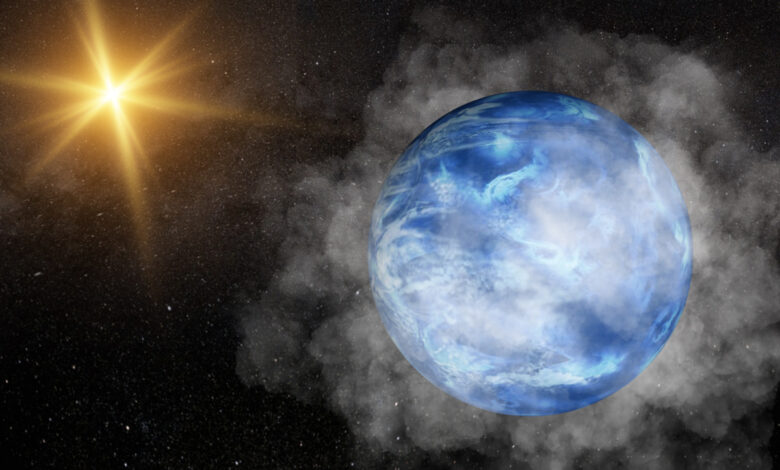
A team of researchers led by Caroline Piulet Garib of the University of Montreal’s Institute for Extrasolar Research discovered the vaporous nature of GJ 9827 d using a technique called “transmission spectroscopy.”
Transmission spectroscopy is based on the fact that elements and their constituent chemicals absorb light at specific electromagnetic wavelengths. When the light of a star shines on its planet’s atmosphere, the elements in that planet’s atmosphere absorb certain wavelengths and leave gaps in the light spectrum. These gaps are the effects of specific elements and molecules in the atmosphere.
Until now, most of the exoplanets that astronomers have studied using the transmission spectroscopy method had atmospheres composed of two examples of the lightest and most common elements in the universe, hydrogen and helium. The atmosphere of these planets is similar to the atmosphere of the gas giants of the solar system, that is, Jupiter and Saturn; But they differ significantly from Earth’s complex atmosphere and the atmosphere necessary for life as we know it. According to Piole:
GJ 9827 d is the first exoplanet we have discovered with an atmosphere as rich in heavy molecules as the atmospheres of the rocky planets of the Solar System. This finding is a big step.
Read more:
The planet GJ 9827 d was first discovered by the Kepler space telescope in 2017. This exoplanet is located at a distance of 8.4 million kilometers from its parent star, GJ 9827, which is approximately 6% of the distance between Earth and the Sun. This proximity means that the planet GJ 9827 d orbits its star in more than six Earth days. This planet is the third known exoplanet around the star GJ 9827.
In 2023, the Hubble Space Telescope discovered interesting signs of water vapor in the atmosphere of GJ 9827 d. However, the high precision and sensitivity of James Webb and the Near Infrared Imager and NIRISS spectrometer instrument proved that this exoplanet not only has signs of water vapor, but is completely submerged in it. According to researchers, many worlds like GJ 9827d are waiting to be discovered. Steam and blue planets seem to be very common.
The scientists’ findings have been published in Astrophysical Journal Letters.









